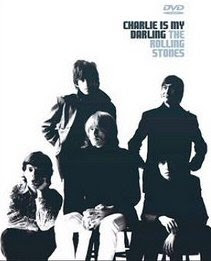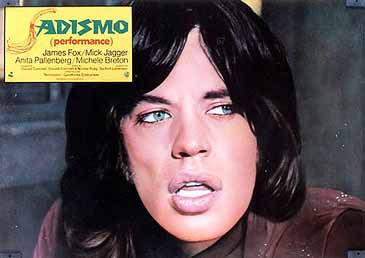CHARLIE IS MY DARLING (1966)
COCKSUCKER BLUES (1972)
COCKSUCKER BLUES (1972)
Mick Jagger on the cover of the July 6, 1972 issue of Rolling Stone.
WITH A HARD DAY’S NIGHT, The Beatles became pioneers of the showbiz Beat Boom band. Under the wing of RADA dropout Brian Epstein, The Fab Four performed with the likes of Tommy Cooper and Alma Cogan. The Rolling Stones, on the contrary, had no pretensions to follow in such a luvvie tradition; their manager, Andrew Loog Oldham, memorably came up with the catchphrase “Would you let your daughter marry a Rolling Stone?,” at once instilling a surly attitude that separated them from the fresh-faced pack.
CHARLIE IS MY DARLING follows The Stones on their two-city tour of Ireland in 1965. More a 51-minute montage than a documentary, it's a jagged collection of grainy, handheld fragments, with songs and commentary starting and ending just as abruptly; the lack of synchronized live sound to match the concert footage, however, is the film's greatest drawback. They're still kids here, playing relatively small auditoriums jammed with hysterical, screaming fans. Brief interview segments show Charlie Watts to be virtually incoherent, uncomfortable, and unimaginative, while Bill Wyman claims he's not a musician, he just plays in a band. Keith Richards and Mick Jagger were clearly the brash media players and court jesters even then, while Brian Jones comes off as the band's sensitive soul, never more so than with the eerily prescient, "Let's face it: the future as a Rolling Stone is very uncertain."
With the release of their definitive album 'Exile on Main Street', The Stones sought to document a developing self-mythology by hiring photographer and filmmaker Robert Frank for their 1972 North American tour. There was much anticipation for the band's arrival, with them having not visited the United States since the 1969 disaster at Altamont, but the resulting movie - with scenes of debauchery, lewdness and assorted hangers-on shooting up - was never released, and plays like CHARLIE IS MY DARLING’s evil twin brother. The Stones quickly forbade the work, for the obvious reasons of off-stage excesses, but also for the monotony, loneliness and tedium of their life on the road it so accurately captured. Frank fought The Stones' decision, and after a protracted legal battle, it was ruled that the film could only be shown once a year, and then only when the director was in attendance.
COCKSUCKER BLUES was shot cinema verite, with several cameras lying around for anyone in the entourage to pick up and start shooting. The ultimate irony of that technique, however, is that there was really very little to film. In one scene, Jagger, Bianca Jagger, and a soundman film each other simply standing in a hallway, too bored or stoned to do anything more. Frank's mixing of grainy black-and-white footage with Super-8 colour makes it impossible to tell what time it is at any point; the light is always the gray that could be dusk or dawn, and the band's sobriety is no sure measure of the time of day. The result is a feeling of timelessness, of being trapped in a continual waiting game between shows, played out in hotels and concrete-walled dressing rooms. It is worth mentioning, however, that the nastiest behaviour belongs to the roadies; but Mick and Keith do stand by and offer encouragement as their crew ravishes two marginally willing women aboard their private jet.
This police mugshot of Jagger occurred when the singer was arrested on charges of assault after getting into a brawl with a photographer during the ‘72 tour. Keith Richards and three others were also arrested.
Of course, some gems are caught using this angle; Mick films himself masturbating in a mirrored hotel ceiling, and Keith theatrically throws a television off a hotel balcony (an act that earns him a "TV Repairman #1" end credit). Aside from these moments, the band seems genuinely ill at ease anywhere but on stage. When The Stones aren’t performing or in impromptu jams, they seem tired and uninterested; in other words, like Charlie Watts has looked every day since 1963.






